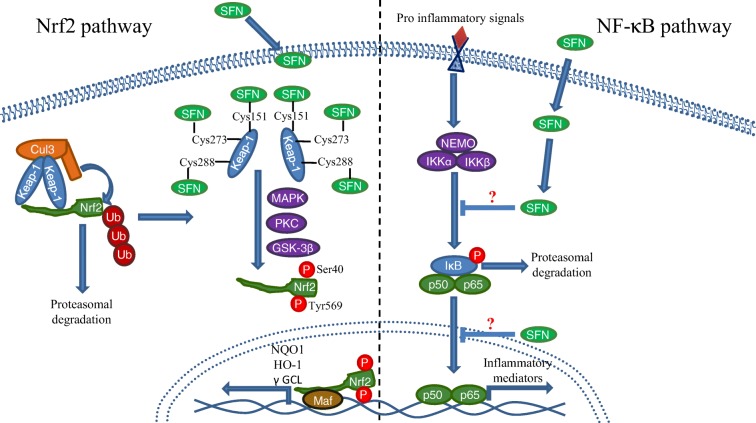Fig. 4.
Effects of sulforaphane on Nrf2 and NF-κB pathways. After sulforaphane enters the cell, it can interact with many different proteins, directly modulating numerous cellular pathways. Nrf2 pathway: Keap1/Nrf2 pathway is one of the most important pathways affected by sulforaphane that is responsible for antioxidant response and xenobiotic metabolism (left panel). Nrf2 is repressed by Keap1 and degraded by the proteasome under basal conditions, but when Keap1 regulatory cytosines are oxidized, Nrf2 is released and post-translationally modified to be translocated into the nucleus and dimerize with small Maf proteins. Nrf2 can then bind to antioxidant response elements, namely AREs. Also, sulforaphane can oxidize some important regulatory cytosines from Keap1, allowing Nrf2 cytosolic accumulation and nuclear importing. NF-κB pathway: NF-κB is also an important pathway regulated by sulforaphane. It is in charge of inflammatory response regulation. Under basal conditions, NF-κB is sequestrated into the cytosol by IκB, but when pro-inflammatory ligands bind to its receptors, the IKK protein family phosphorylates IκB to degrade it via proteasome, so NF-κB is able to translocate into the nucleus and transcript several inflammatory mediators. Sulforaphane is capable to inhibit IκB phosphorylation and NF-κB nuclear translocation, although the exact mechanism of action is not fully known

